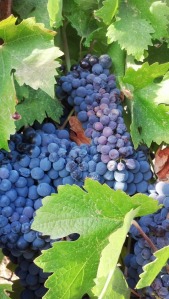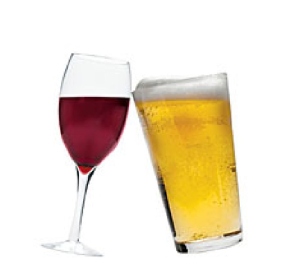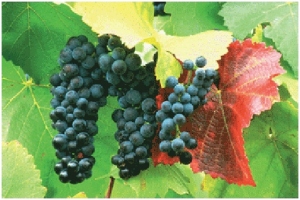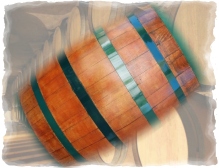I mentioned a couple weeks ago that we would keep updates on the small crop of Zinfandel we would be helping with and wouldn’t you know it, we got busy and forgot. However, what I can do is let you in on some simple basics about this particular grape varietal.
By the way, the crop we will be helping do the crush on is still on the vine – yes, you heard  right, our friend ran into some problems with using a particular facility to do the crush and it set him back a couple weeks. Still, although there’s some raisining going on, the winegrower wanted a high octane vintage, and he’s got it now. If you’re not aware, the longer the grape is on the vine, the sugar content will likely go up and in-turn raises the alcohol level.
right, our friend ran into some problems with using a particular facility to do the crush and it set him back a couple weeks. Still, although there’s some raisining going on, the winegrower wanted a high octane vintage, and he’s got it now. If you’re not aware, the longer the grape is on the vine, the sugar content will likely go up and in-turn raises the alcohol level.
Anyway, back to the dynamic Zinfandel grape. First, if you’re wondering where the name came from – well, no one really knows. Except that it is used primarily in the United States. It’s generally agreed the grape originally came from the region surrounding the Adriatic Sea, such as the countries of Italy and Croatia. However, don’t get into an argument about it because there’s not enough information out there to suggest where the varietal actually first started. You will also here that the grape is genetically the same as Primitivo, which derives from Croatia.
Zinfandel, or Zin as fans of the wine call it, was introduced in the United States nearly 200 years ago. In the mid-1800s, the grape arrived in Sonoma and Napa regions of California. Here’s an interesting tidbit: Zin was part of the the first wine boom during the late 1800s and was the most widely grown vine in California. In short, Zinfandel is an American product and essentially a California grape.
Disappeared, then reappeared white
For reasons that aren’t necessarily clear, but due in part to Prohibition, Great Depression and World War II, wineries closed and the Zinfandel variety did not surface again in any regularity, becoming almost lost in history. While connoisseurs of the varietal look down on it, White Zin brought back the grape from obscurity. White Zin is pink, lower in alcohol and easier to drink, becoming a popular inexpensive alternative. They make White Zinfandel by taking the skins off just after the crush, offering up a lighter wine for the general public to enjoy. Its said that one in ten bottles of wine sold in the U.S. are White Zin – multiples times more than its red brother.
As the wine boom started up in the 1990s, varietals of all sorts became popular including a resurgent Zinfandel. Zin, which is typically picked during normal harvest time (September/October), often is used for port and can be picked later for a late harvest version. Another little tidbit is that vintners often used Petite Syrah to top off or even mix with Zinfandel. Petite Syrah offers an inky color to Zin and makes it appear more full bodied.
Only Chardonnay and Cabernet Sauvignon are are more popular than Zin. Red Zinfandels are widely known in the Paso Robles wine region of the California Central Coast. The grape loves the huge temperature diurnal in Paso Robles, or Paso as it’s called locally. Temperatures in Paso can often hit the 100s in the summer but cool off to a cool 50 at night. Paso Roblans are very territorial about their Zin – check out the YouTube video that became a video hit.
Zinfandel has a relatively thin skin, which can make it tricky to grow. Known for their higher alcohol levels, not all wine enthusiasts gravitate to Zin. However, fans of Zinfandel are extremely loyal and fervent in their admiration for the wine.
Regardless, Zinfandel will always be America’s wine and can be drank with almost any meal, although consider it with a big meaty meal. Zin is a diverse wine that can be made into many assorted types of wines. Just be aware when foreign based Zin’s are sold here in the U.S., they aren’t Zin but likely Primitivo. Again, beware.
Remember to look in your stores for great Zinfandels from Sonoma, Napa, Amador (gold country) and of course Paso Robles in the northern region of San Luis Obispo County … Zinfandel, Paso’s wine.
Cheers,
Daryle Hier







